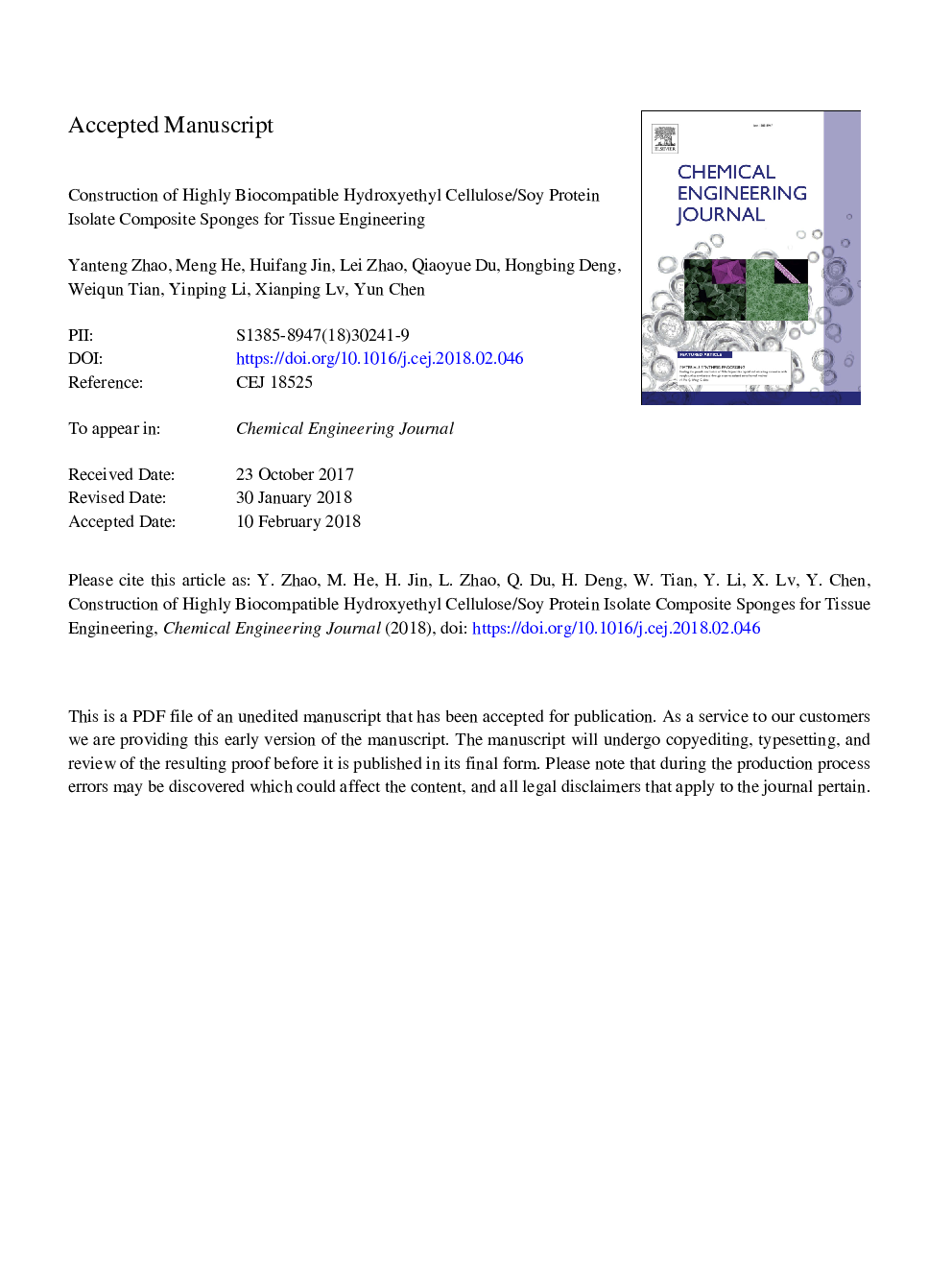| Article ID | Journal | Published Year | Pages | File Type |
|---|---|---|---|---|
| 6579992 | Chemical Engineering Journal | 2018 | 45 Pages |
Abstract
In this study, ethylene glycol diglycidyl ether (EGDE)-crosslinked hydroxyethyl cellulose (HEC)/soy protein isolate (SPI) composite sponges (EDHSS) were constructed by the combination of blending, crosslinking and freeze-drying. The sponges were characterized by FTIR, wide-angle X-ray diffraction (XRD), solid-state 13C NMR, scanning electron microscopy (SEM) and mechanical testing. The results indicated that crosslinking interactions occurred in the inter- and intra-molecules of HEC and SPI during the fabrication process. EDHSS exhibited uniformly inter-connected porous structure on their surfaces and cross-sections (average pore size â¥220â¯Î¼m) and good mechanical property, indicating certain miscibility between HEC and SPI. Cytocompatibility, degradability, hemocompatibility and initial bioactivity of EDHSS were evaluated by a series of in vitro experiments. MTT assay and cell culture experiment results showed that EDHSS had good biocompatibility, and L929 cells could adhere on almost everywhere of the surface and enter their interiors. The results of blood coagulation routine, hemolysis testing, red blood cell incubation experiment and blood absorption testing indicated that EDHSS had good hemocompatibility and no significant side-effects on the anticoagulation of whole blood. Moreover, EDHSS exhibited in vitro degradability and certain in vitro bioactivity. Therefore, EDHSS had potential application as biomaterials that may contact with blood or as scaffold for tissue engineering.
Related Topics
Physical Sciences and Engineering
Chemical Engineering
Chemical Engineering (General)
Authors
Yanteng Zhao, Meng He, Huifang Jin, Lei Zhao, Qiaoyue Du, Hongbing Deng, Weiqun Tian, Yinping Li, Xianping Lv, Yun Chen,
